Pine planting rules
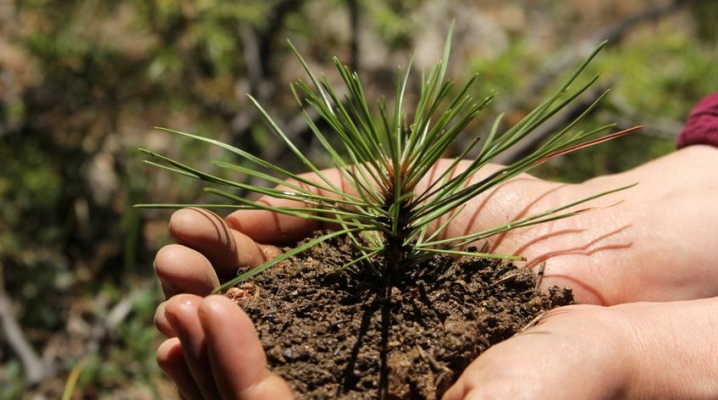
Pine is a popular landscaping tree in many modern garden plots. Someone appreciates it for its durability, not finickyness and beauty, and someone - for the healthful smell of pine needles, which can cure many diseases. This article will discuss the rules for planting pine in a summer cottage.
Type selection
Today there are a huge number of pine varieties, depending on the characteristics of the needles, type of fruit, maximum height and distribution area. The most popular varieties will be briefly described below.
- Scots pine. It is common in Europe and Asia. Average height - 40–45 m, diameter - up to 1.2 m. External signs: straight trunk, gray-brown bark, conical (seedlings) or round (adult) crown.
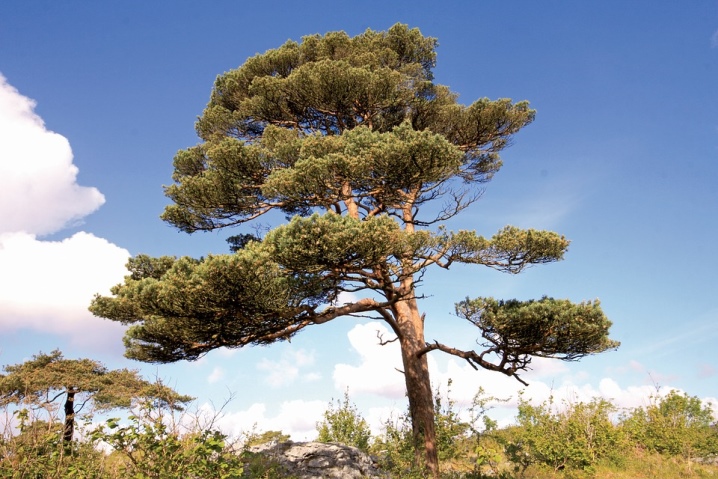
- Siberian cedar pine. In other words, Siberian cedar. It is found in the taiga, as well as in Eastern and Western Siberia. Average height - up to 25 m. External signs: gray-brown straight trunk, a large number of tops, large ovoid fruits up to 12 cm in length.
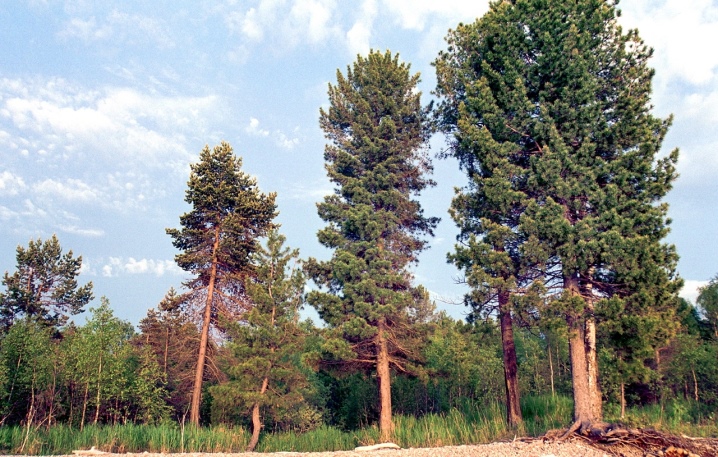
- Marsh pine. A common variety in southeastern North America. It is distinguished by its high height (up to 50 m) and yellow-green needles up to 45 cm in length.
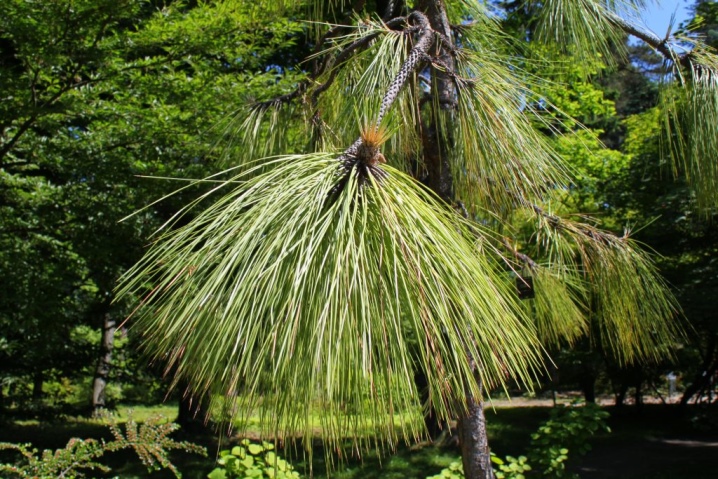
- Pine of Montezuma (white pine). Found in western North America and Guatemala, it grows up to 30 m in height. A distinctive feature of this variety is considered to be a rounded crown, as well as needles of a grayish-green color.

- Crimean pine. One of the rarest species, common in the Caucasus and Crimea. It is distinguished by its high height - up to 45 m, a pyramidal or umbrella-shaped crown, as well as brown long cones up to 10 cm.
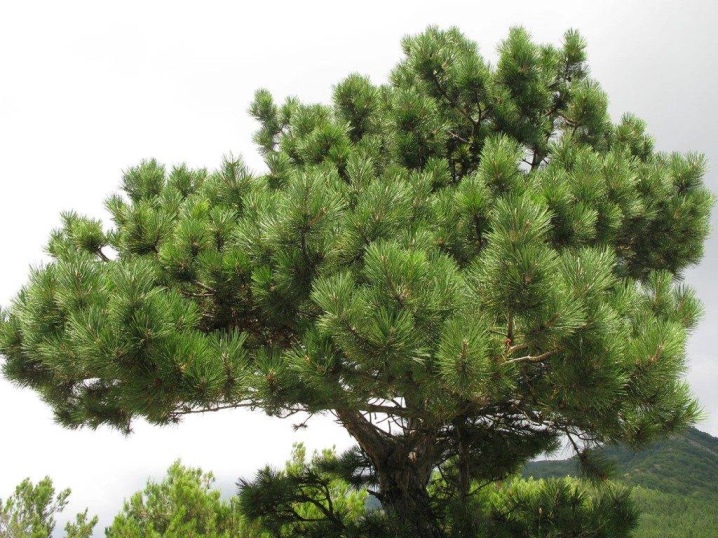
- Himalayan pine. Most popular in Afghanistan and in the Chinese province of Yunnan. The famous decorative type of pine, it is distinguished by a rather large height (up to 50 m) and a lowered type of needles.
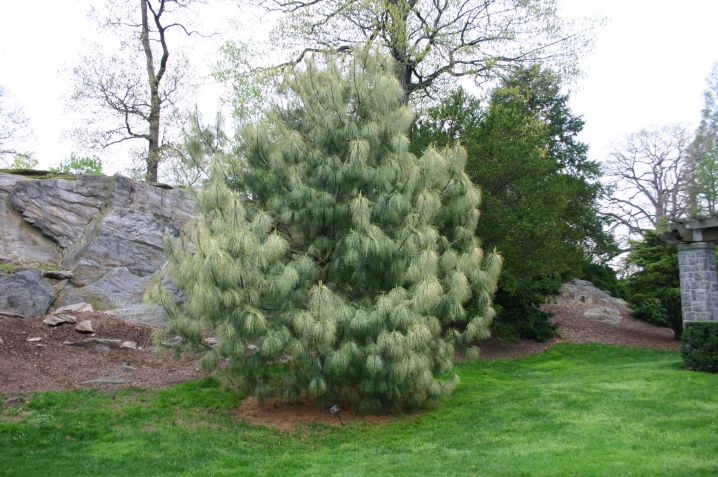
Time for disembarkation
Experienced gardeners know that there are only 2 good periods for planting pine trees on the land: spring and autumn. If we are talking about spring, then it should be exactly the middle of the season - April or the first half of May. If you decide to plant pine trees in the autumn season, then here you should give preference to the warmer months - September and October, when the earth has not yet had time to cool down after summer. It is strictly forbidden to plant a pine tree during the period of active growth - this is the period of time during which the shoot will germinate and the wooding phase begins. The fact is that at this time, the sprout needs an increased amount of water, and the planting process itself leads to temporary dehydration of the root system.
Early autumn is considered an ideal time for planting pine seedlings, at this time the development of all plants slows down and the risk of harm to the seedling itself during transplantation decreases. In some cases, it is allowed to plant a pine in the winter season, but here it is recommended to provide the landing site with additional protection from wind and cold. For this, spruce branches or spunbond are usually used. Cloudy weather with a high level of humidity is more suitable for planting pine trees - the seedlings of these trees do not tolerate heat, high temperature and dry air.
Therefore, pine should not be planted in late May and June.

Choosing a place
Gardeners know that representatives of all coniferous crops are undemanding to the planting site.This applies to both environmental conditions and soil, an abundance of sunlight or a lack of water. Below will be listed the basic conditions for planting pine at their summer cottage.
- The soil. Pine trees can grow peacefully for decades even on soils that are poor in nutrients and fertilizers. Pine trees have an incredibly strong root system that allows them to successfully establish themselves in sandy and sandy loam soil. The need for planting on a particular soil may vary depending on the type of pine. For example, most conifers, on the contrary, do not like to grow in soil that is too rich in minerals and natural fertilizers, which cannot be said about the Mediterranean and American varieties.
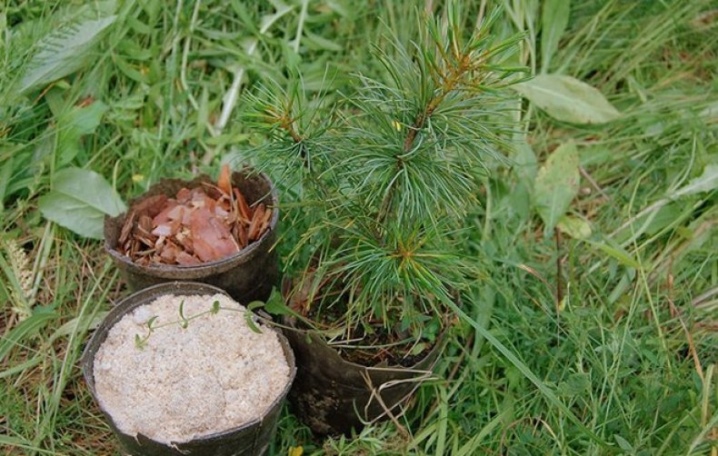
- Sunlight. Mature pines have a positive attitude towards open space and plenty of sunlight. If we are talking about pine seedlings, then they are best planted in slightly darkened places or in partial shade. Excessively intense sun rays will slow down the formation of needles and drain the soil near the tree.
That is why gardeners usually plant pine seedlings from the south side of the world relative to the house.
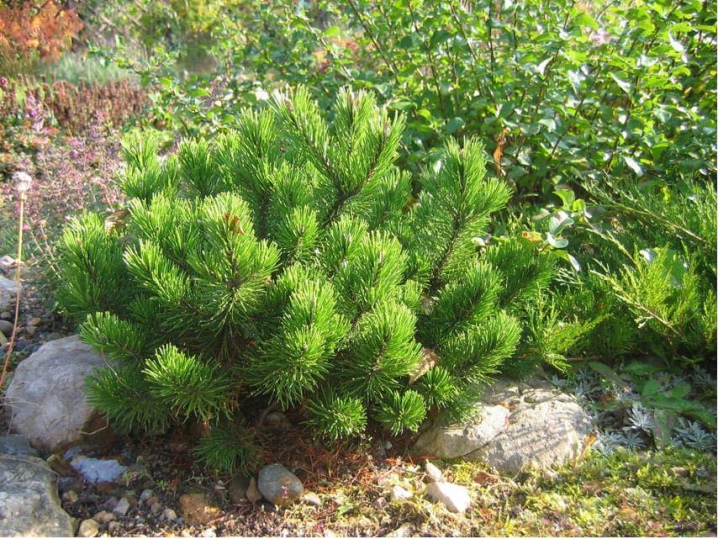
- Location relative to the site. When planting seedlings near the house, the same conditions apply as when planting all other trees - it should be a moderately open area away from high-voltage lines and roads, as well as protected from strong winds. At the dacha, pines are usually planted along the territory of the site to mark the boundaries of the territory, in garden plots, pines are used as an element of the landscape. In ordinary vegetable gardens, pines are planted in front of plots of land with vegetables that do not respond well to direct sunlight and need shade. Often, mature pines can be found in the courtyards of residential buildings, here they perform a purely decorative and health-improving function - it is believed that the aroma of needles has a health-improving effect on the body.
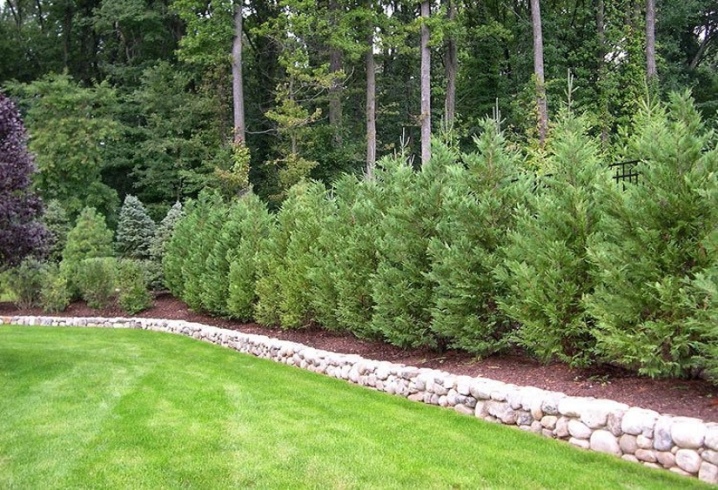
- Ground level. Moisture and stagnant water have a bad effect on the pine root system, which leads to root rot and the death of branches. That is why it is not recommended to plant pines in hollows and ditches, where water will accumulate.
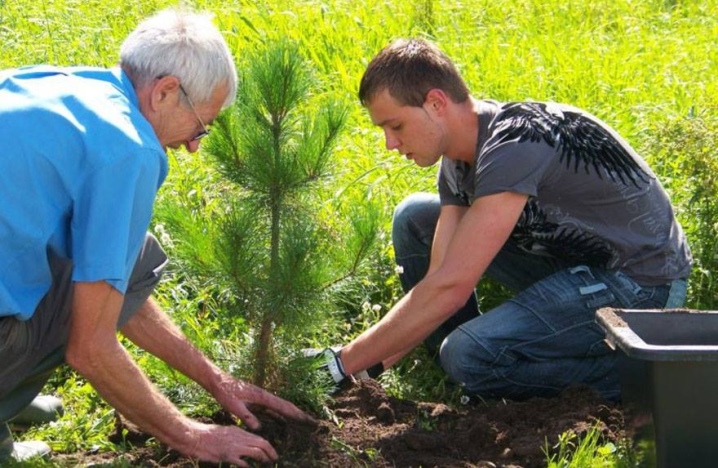
How to prepare the ground?
Despite the fact that conifers are not picky about the type of soil and are able to get along in almost any soil, there is a list of recommendations, which must be adhered to when preparing soil for pine.
- Favorable conditions. Remember, pine trees do not tolerate heavy and dense soils through which moisture or oxygen does not pass well. In addition, for the favorable growth of pines, the soil must have a certain level of acidity - at least 4 units. To maintain the acidity level, it is advised to fertilize the soil with sawdust at least once a year (in autumn or spring), supply it with acidic natural fertilizers or water it with slightly oxidized water (3 teaspoons of citric acid in a standard 10-liter bucket).
- Substrate. To create an ideal substrate, you will need: fallen needles, high peat and soil (1: 2: 1). In addition, it is advisable to add a handful of fresh sawdust (usually 80–90 grams) and garden sulfur (no more than 10 grams) to the resulting mixture.
- Nutrients. For full and healthy growth, a pine seedling will need elements such as nitrogen (only in small quantities), magnesium, potassium, calcium, phosphorus.
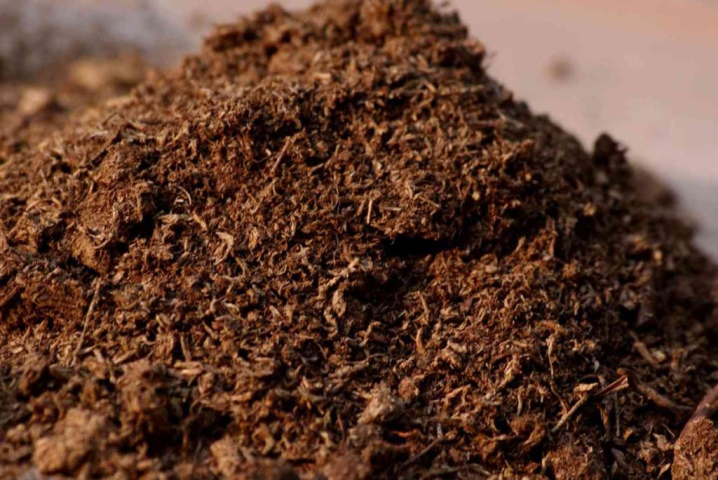
Step-by-step instruction
To figure out how to properly plant pine seedlings, experienced gardeners have compiled step-by-step instructions with recommendations, tips and rules. The specifics of some of the points have been or will be discussed in other headings.
- Seat selection
- We determine the type of soil, as well as the level of its acidity
The most common are only 3 types of soil: clay, loam and sandy (sandy loam).Clay soil is very plastic - it is possible to make non-cracking crafts from it like from plasticine, it is a heavy and dense soil. Loamy soils can also form certain objects, but they will crumble and crack.
Sandy soils cannot be formed into any object, they are light and constantly crumble.
The acidity of the soil can be determined by the plants growing on a specific section of the soil. So, sorrel, sedge, horsetail, heather, lily of the valley will grow on acidic soil. On relatively neutral soil - quinoa, clover, nettle.
- Substrate formation
- Preparing a pit for planting a seedling
The pit itself for planting a pine tree should be prepared in advance so that it can be planted immediately after purchasing a seedling. The depth of the pit should be chosen depending on the selected pine variety, as a rule, it is from 0.7 to 1 meter. The lowest level is necessarily drainage (it can consist of sand, gravel, expanded clay, stones or broken brick) with a layer of at least 20-25 cm. The next layer is black soil, substrate or a mixture of soil, peat or compost.
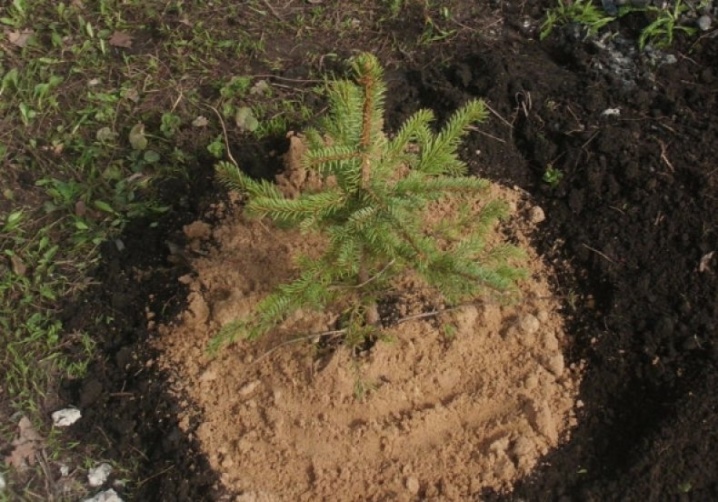
Sapling selection
Exists methods for obtaining pine seedlings, such as:
- grow from seeds at home;
- buy in a specialized forest nursery;
- dig a seedling in the forest.
Each option has its own pros and cons. For example, growing pine from seeds will take you a huge amount of time (in rare cases, up to 3 years) and effort (ensuring a comfortable temperature level, comfortable light and sufficient air). By purchasing a seedling from the nursery, you will be sure of its exact age, the health of the branches and the root system. Saplings from the forest - here you will not know the exact age of the tree, its maximum growth and risk damaging the root system when digging up. It is better to choose seedlings with a closed root system and an earthy clod - this will make it easier for the tree to get used to the new planting site.
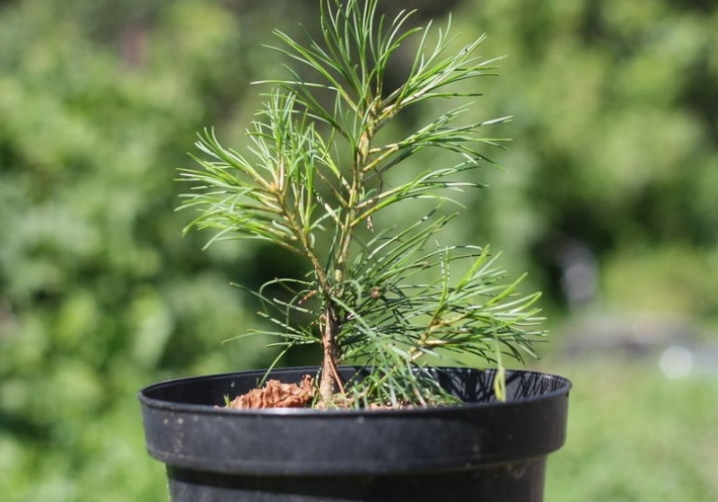
Landing
For a pine seedling, it is better to dig a cone-shaped hole. After preparing the drainage and the substrate, place the seedling in the hole and water it well, then cover it with chernozem or the remaining soil. When falling asleep, make sure the root collar is above ground level. After some time, the dug-up earth will settle under moisture, the tree will be leveled with the ground. One of the important points in planting a pine tree is maintaining the optimal distance of the seedlings from each other.
For tall varieties, this distance is 4–5 meters, for decorative and undersized varieties - no more than 2 meters.

Watering
On the first day of planting, you will need at least 2-3 buckets of water in order to so that the seedling takes root fully.
- Mulching
- Shading
Relevant when planting a seedling in early spring, when there is a great chance of burns of a coniferous plant by the sun's rays.
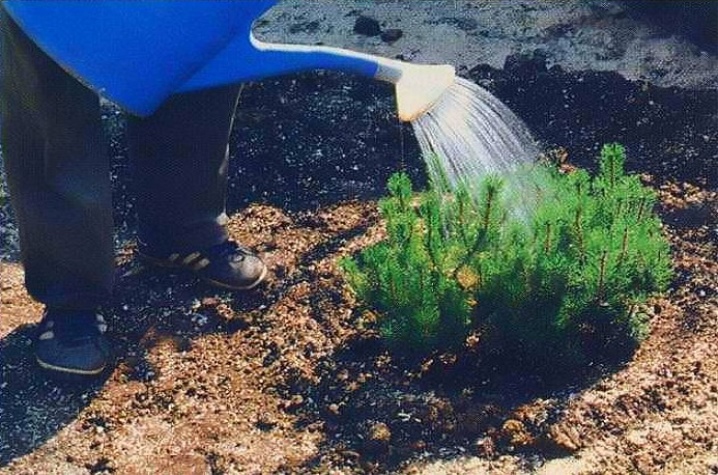
Garter
A must-have procedure for the autumn season, as well as for northern regions with harsh winters and abundant snow.
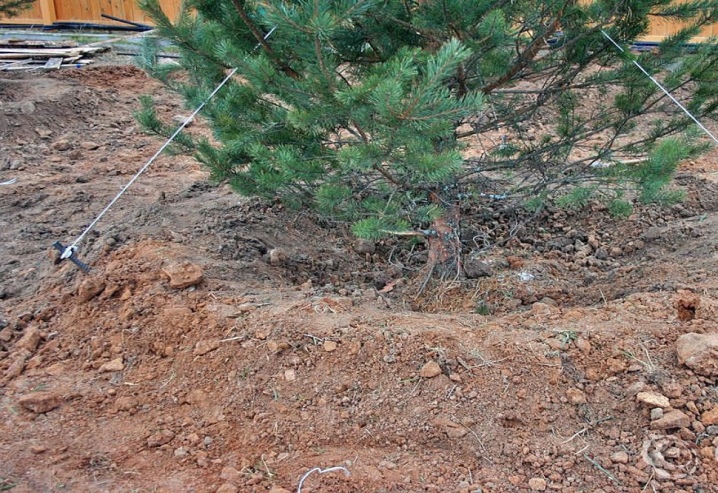
Care Tips
Caring for a young pine cannot be called difficult or exhausting - any amateur can handle it. If we reduce all the care procedures to one list, then it will look something like this:
- top dressing - required during the planting itself and within 2-3 years after it;
- regular watering - 1.5–2 years before the formation of a full-fledged root system;
- loosening - for preventive purposes until the age of 2 years;
- mulching is a mandatory procedure for newly planted pine seedlings; the mulch layer can consist of fallen needles, leaves, bark or peat;
- pruning;
- preventive treatment against pests;
- preparation of pine seedlings for wintering.
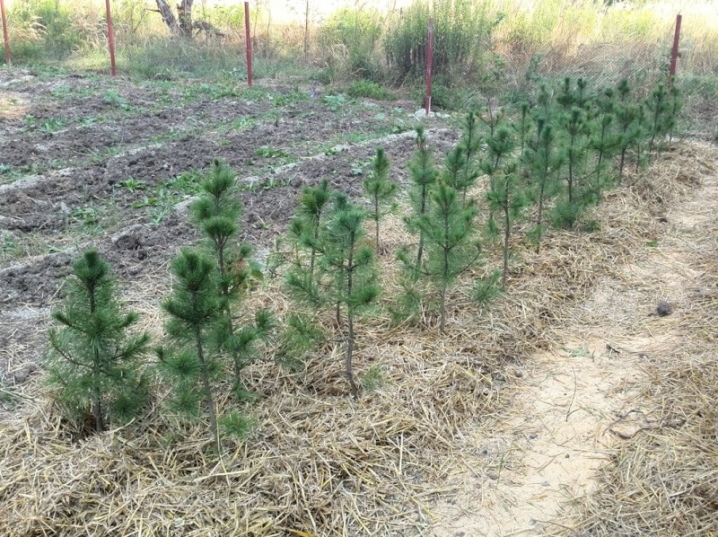
Watering
Watering is the main procedure in caring for any plant. Without a sufficient amount of moisture, the pine needles will turn yellow, dry out or fall off, which will affect both the health of the tree and its appearance. A distinctive feature of mature pines is the ability to retain moisture for a long time in the roots, as well as the ability to remain without water for a long time. The needles that fall to the ground during the growth of the tree form a durable layer that perfectly conducts air and retains moisture. For young seedlings, this layer is formed artificially by mulching.
Many are interested in how often to water. The moisture requirement of any plant varies depending on their age. For example, newly planted pine trees will need at least 2-3 buckets of water weekly. To prevent moisture from stagnating in the roots of the plant, a high-quality drainage layer should be provided. For watering a pine, regardless of its age, you should choose cool and settled water.
Remember to maintain an optimal acidity level - it can be raised with citric acid or vinegar.
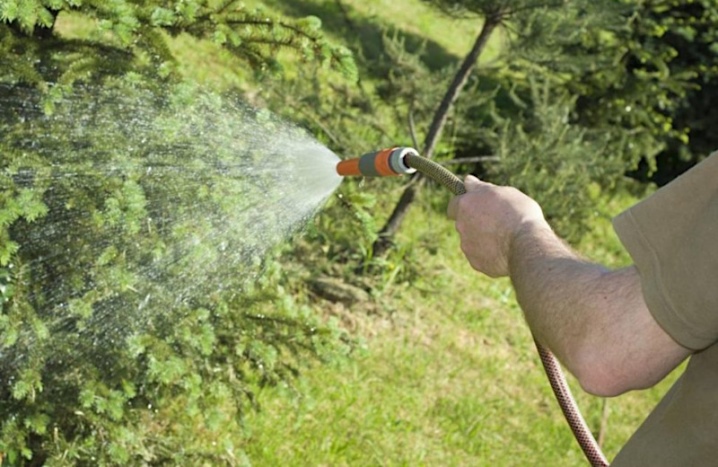
Top dressing
Experienced gardeners resort to feeding adult pines only as a last resort - if they want to give the tree a more presentable and beautiful look. As for young pine seedlings, natural organic waste or compost will be the best fertilizer here. In order for such a mixture to be better absorbed by the seedling, you should loosen the soil near the trunk, forming a shallow round hole around the pine tree. Mix the compost in equal proportions with the old soil and water. When digging a hole, be extremely careful not to damage the roots of your tree.
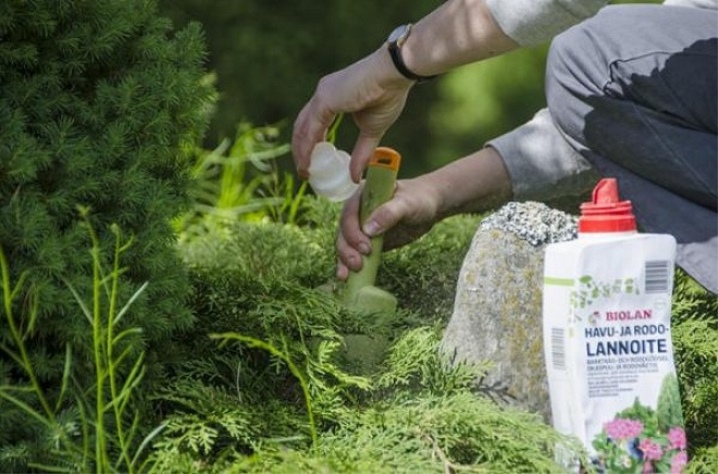
Pruning
For decorative pine varieties, pruning can be carried out at least once every six months. It is used to form a specific shape and crown, and can also be used to remove dried or painful branches and needles. Maintenance pruning should be done every spring. For the procedure, choose the sharpest garden shears that have been disinfected in advance with garden varnish or copper sulfate.
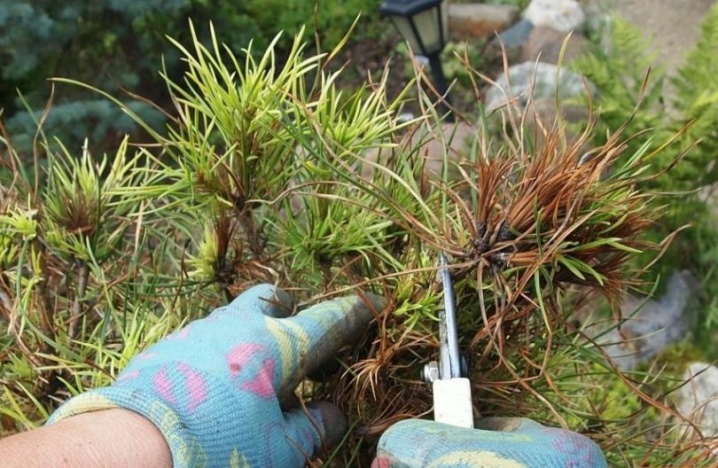
Disease protection
Do not forget to inspect your seedlings for preventive purposes, some of the signs and symptoms of the most common diseases and pests will be described below.
Pests include the following:
- sawfly - falling of needles, yellowing of shoots;
- hermes - yellowing of pine needles, branches and needles of pine are covered with numerous white (as if cotton) specks;
- bark beetle - can be identified by the falling bark.
It is worth paying attention to the following diseases:
- shyute - yellowing and shedding of pine needles;
- rust - yellowing of tree branches, the appearance of yellow bubbles on the branches.
Important! Gardeners usually fight pests by treating pines with insecticides. In case of diseases, a multistage wood treatment with a Bordeaux mixture is recommended.
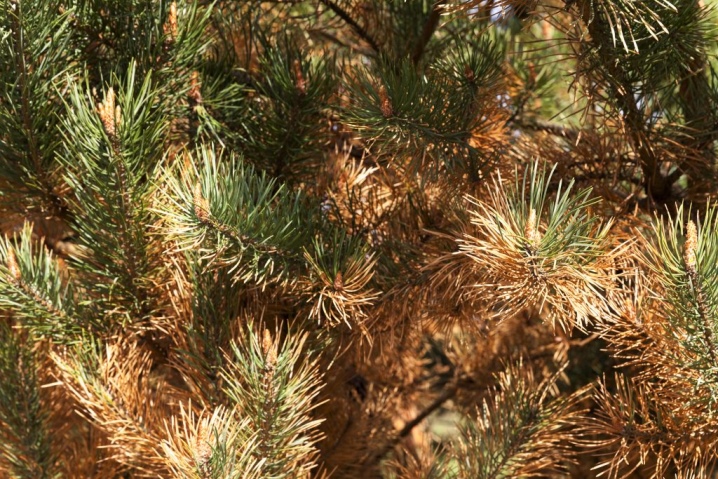
Preparation for wintering
Winter, even for seedlings planted in spring, can be an ordeal. That is why additional protection should be provided for them - the near-trunk circle near the tree is covered with a thick peat layer to maintain the optimal temperature level at the root system. So that the young tree does not suffer from the sun in the spring, it is advised to cover the pine seedlings with shading nets.
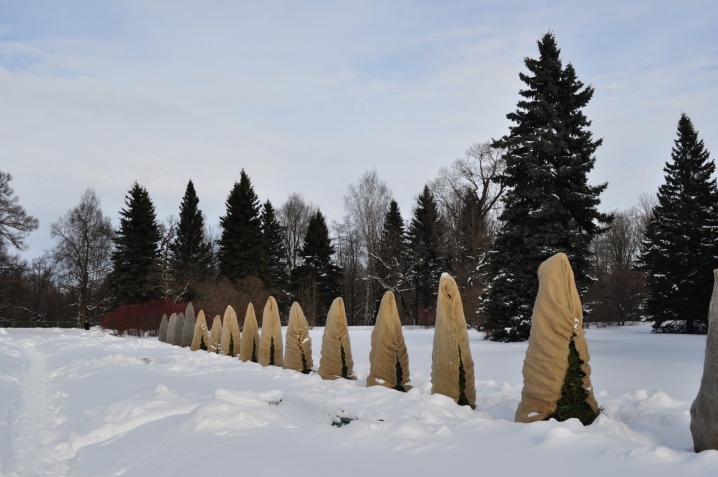
For information on the rules for planting pine, see the next video.



































































The comment was sent successfully.